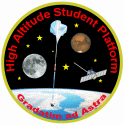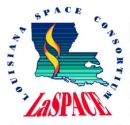



Payload 04 Information
Payload Flight Number:
Institution:
Payload Title:
CRESS - Cosmic Radiation Exposure System for Seeds
Student Leader:
Faculty Advisor:
Payload class:
SMALL
Payload ID Number:
04
Mass:
0.8kg
Current:
100mA
Serial Downlink:
NO
Analog Downlink:
NO
Serial Commands:
NO
Discrete Commands:
NO
Payload Specification & Integration Plan
Due:
Delivered:
Payload Integration Certification
Scheduled:
Actual:
Flight Operation Plan
Due:
Delivered:
Final Flight / Science Report
Due:
Delivered:
Abstract:
The CRESS (Cosmic Radiation Exposure Seed System) project will expose wild-type Arabidopsis thaliana seeds to the unique cosmic ray environment of the Earth’s stratosphere. At 120,000 feet, high altitude balloons are above 99% of the Earth’s atmosphere and are therefore exposed to higher levels of various types of cosmic radiation than on the ground. High energy particles called HZE particles, mainly ionized carbon and iron, are of particular interest due to the damaging effects these particles inflict on genomic material. This project is an initial technology development for constructing a robust, reusable biological exposure platform for radiation exposure using balloons. It is understood that the current flight will see limited HZE compared to extended Antarctic flights planned for the future. Yet this flight opportunity allows design of flight payload and the development of handling procedures relevant to balloon flights. The biological targets are 100,000 seeds that fly dormant and without need for extensive life support during the flight. Though dormant, the seeds will capture the biological effects of any ionizing radiation that is encountered during the flight, and those effects will be revealed by post flight analysis of those seeds and the plants derived from those seeds. |